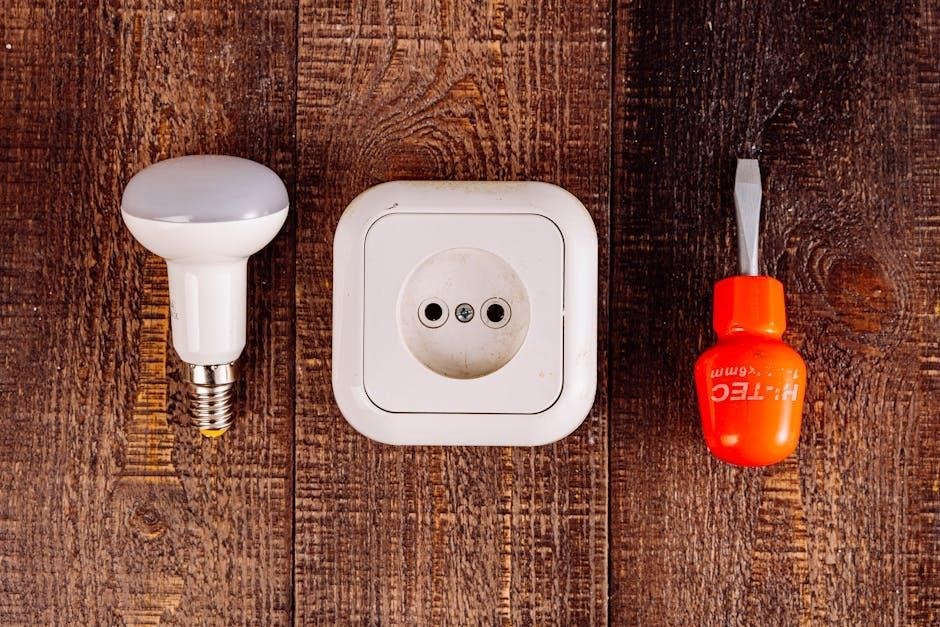Manual and electric breast pumps are essential tools for expressing milk, with
various options
available to suit different needs and preferences of mothers, including frequency of use and lifestyle considerations always.
Definition of Manual and Electric Breast Pumps
A manual breast pump is a device that is operated by hand, allowing mothers to express milk by creating suction through a manual mechanism, such as a handle or a bulb;
An electric breast pump, on the other hand, is a device that uses electricity to create suction, making it easier and faster to express milk.
Both types of pumps have their own unique characteristics and are designed to help mothers express milk in a comfortable and efficient manner.
The definition of these pumps is important to understand, as it can help mothers make informed decisions about which type of pump to use.
Electric pumps are often preferred by mothers who need to express milk frequently, while manual pumps are often preferred by mothers who only need to express milk occasionally.
Overall, the definition of manual and electric breast pumps is an important consideration for mothers who are looking for a reliable and efficient way to express milk.
Understanding the differences between these two types of pumps can help mothers choose the best option for their needs.
The key characteristics of each type of pump are essential to understand in order to make an informed decision.
Importance of Choosing the Right Breast Pump
Choosing the right breast pump is crucial for mothers who want to express milk efficiently and comfortably.
The right pump can make a significant difference in the breastfeeding experience, allowing mothers to express milk with ease and confidence.
A good breast pump can also help to reduce discomfort and pain, making it easier for mothers to continue breastfeeding.
Additionally, the right breast pump can help to ensure that milk is expressed safely and hygienically, reducing the risk of contamination and infection.
Mothers who choose the right breast pump can also enjoy greater flexibility and convenience, allowing them to express milk on the go or in the comfort of their own home.
Overall, choosing the right breast pump is essential for a positive and successful breastfeeding experience.
It is essential for mothers to consider their individual needs and preferences when selecting a breast pump.
By doing so, they can ensure that they find a pump that meets their unique requirements and provides them with the best possible breastfeeding experience.
This can help to build confidence and make breastfeeding a more enjoyable experience.

Types of Electric Breast Pumps
Electric breast pumps include double, single, and hospital-grade options, each with unique features and benefits always available to mothers.
Double Electric Breast Pump
A double electric breast pump is a type of pump that allows mothers to express milk from both breasts simultaneously, which can be a significant time-saver for many women. This type of pump is particularly useful for working mothers or those who need to express milk frequently. The double electric breast pump is designed to be efficient and convenient, with many models featuring adjustable suction settings and comfortable breast shields. Some double electric breast pumps also come with additional features such as timers, memory settings, and rechargeable batteries. Overall, a double electric breast pump can be a valuable investment for mothers who want to express milk quickly and easily. With its ability to pump both breasts at once, this type of pump can help mothers save time and increase their milk supply. Many mothers find that a double electric breast pump is an essential tool for expressing milk.
Single Electric Pump and Hospital-Grade Electric Breast Pump
A single electric pump is a type of pump that allows mothers to express milk from one breast at a time, which can be a more affordable option for some women. On the other hand, a hospital-grade electric breast pump is a high-end pump that is designed for frequent and heavy use, often used in medical settings. These pumps are typically more powerful and durable than personal-use pumps, with advanced features such as multiple suction settings and customizable pumping programs. Hospital-grade pumps are often rented or purchased by mothers who need to express milk for an extended period, such as those with premature or hospitalized babies. Single electric pumps and hospital-grade pumps cater to different needs and preferences, offering options for mothers who require a more basic or advanced pumping experience. The key difference between these pumps lies in their suction power, durability, and features, making them suitable for various situations and users. They are designed to provide efficient and effective milk expression.

Comparison of Manual and Electric Breast Pumps
The comparison involves evaluating features and benefits of manual and electric pumps carefully always.
Differences in Operation and Frequency of Use

The operation of manual and electric breast pumps differs significantly, with manual pumps requiring manual expression and electric pumps using motorized suction. This difference affects the frequency of use, as electric pumps are generally more efficient for daily use.
Mothers who need to pump frequently may prefer electric pumps for their speed and convenience, while those who pump less often may find manual pumps sufficient. The frequency of use is a crucial factor in choosing between manual and electric breast pumps, as it impacts the overall pumping experience and milk expression.
Understanding these differences is essential for mothers to make informed decisions about their breast pump needs, considering their lifestyle, pumping frequency, and personal preferences to ensure a comfortable and effective pumping experience.
Lifestyle and Mobility Considerations
Lifestyle and mobility play a significant role in choosing between manual and electric breast pumps, as they impact the convenience and practicality of pumping.
Mothers with active lifestyles or those who need to pump on-the-go may prefer manual pumps for their portability and ease of use without a power source.
In contrast, mothers who spend more time at home or have access to a power source may find electric pumps more suitable, despite being less portable.
Additionally, working mothers may appreciate the convenience of electric pumps, which can be used in a private area at work, while manual pumps may be more discreet for pumping in public.
Considering these lifestyle and mobility factors helps mothers select the most suitable breast pump, ensuring a comfortable and stress-free pumping experience that fits their individual needs and circumstances.
This consideration is essential for mothers to make an informed decision about their breast pump needs.

Features of Electric and Manual Breast Pumps
Electric and manual breast pumps have distinct features, including suction power and pumping speed, impacting user experience and milk expression efficiency always and effectively every time.
Suction Power and Pumping Speed
Electric breast pumps generally have stronger and more adjustable suction power compared to manual pumps, which rely on the user’s strength and technique to express milk. The pumping speed of electric pumps is also typically faster, allowing for more efficient milk expression. This can be especially beneficial for mothers who need to express large amounts of milk in a short amount of time. In contrast, manual pumps may require more time and effort to achieve the same results. However, some manual pumps are designed to mimic the natural sucking rhythm of a baby, which can help to stimulate milk letdown and expression. Overall, the suction power and pumping speed of a breast pump are important factors to consider when choosing between electric and manual options. The right pump can make a significant difference in the ease and effectiveness of milk expression, and can help to support a mother’s breastfeeding journey.
Hands-Free Operation and Portability
Electric breast pumps often feature hands-free operation, allowing mothers to multitask while expressing milk. This can be especially convenient for working mothers or those with other responsibilities. Some electric pumps come with wearable or portable designs, making it easy to express milk on-the-go. In contrast, manual pumps typically require manual operation, which can be more time-consuming and may not be as convenient for busy mothers. However, manual pumps are often more portable and lightweight, making them easy to take on trips or to work. The portability of a breast pump is an important consideration for mothers who need to express milk in different locations. Many electric pumps also come with carrying cases or bags, making it easy to transport them to and from work or other destinations. Overall, the hands-free operation and portability of a breast pump can make a significant difference in the convenience and ease of use. Electric pumps are often designed with busy mothers in mind.



